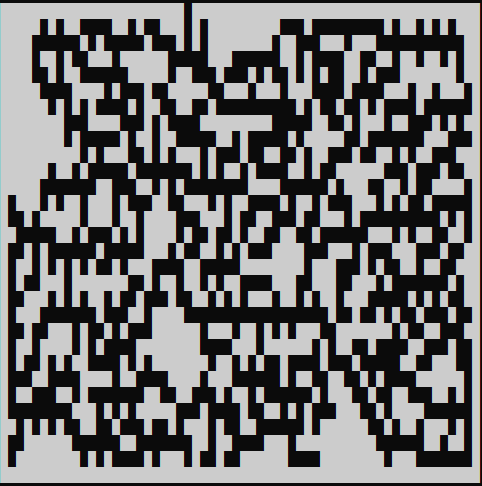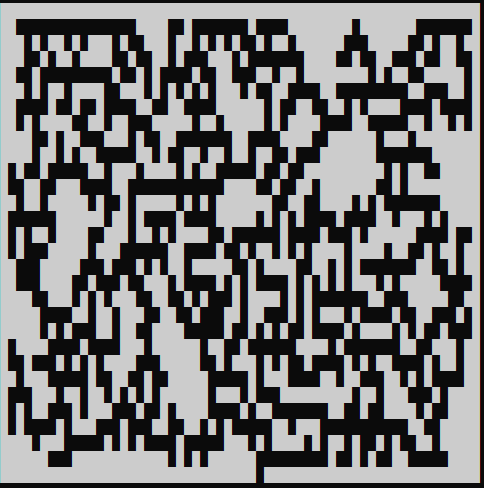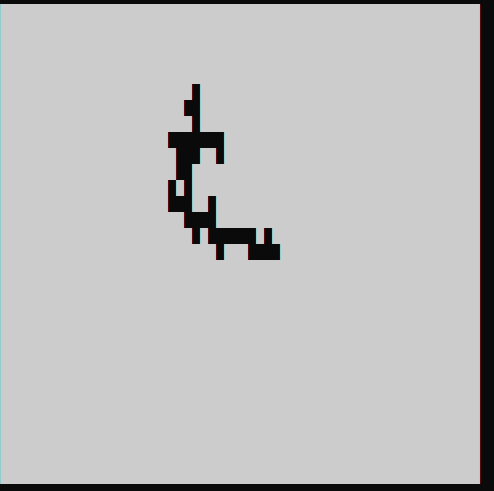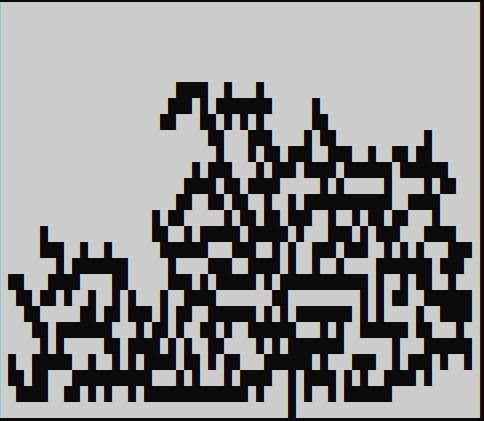Procedural Labyrinth
In a group project, it was my assignment to create a labyrinth generator. Since I had recently properly understood recursion, I decided to create the labyrinth recursively.
The maze is saved as a two-dimensional array, that has 1's for walls and 0's for hallways. Before the generation, the array is filled with 0's. The recursive function begins in the middle, working outward. The reason for this was that the player has to start in the middle as well.
After every step, multiple things are considered: Is the next tile a wall? Would adding this path create a circle? How many new paths? ...



...but there are also instances when the algoritm terminates quickly or covers only half of the map. For example when it generates little hallway splits and then collides with itself. It's like running into yourself while playing 'snake', but your snake can split itself.

